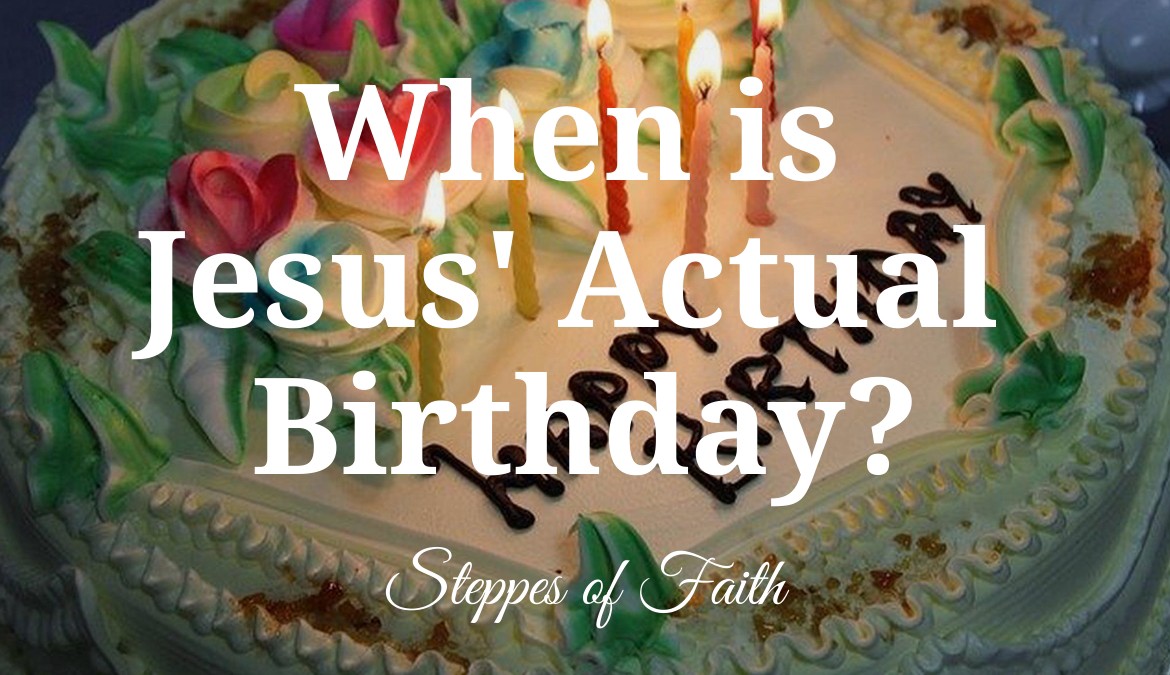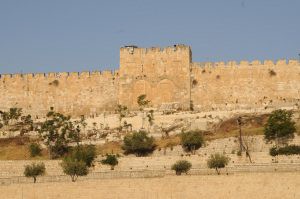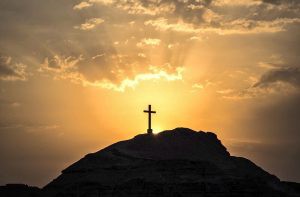 http://www.steppesoffaith.com/faith/jesus-birthday
http://www.steppesoffaith.com/faith/jesus-birthday
?For God so loved the world that He gave His only begotten Son.? John 3:16
One of my husband?s Christian coworkers has recently expressed that he doesn?t celebrate Christmas. As deeply believing Christians, my husband and I can?t understand why. The only conclusion we?ve come to is that perhaps his coworker mistakenly believes the holiday is more about worshipping the Roman god Saturnalia and not the birth of our Lord Jesus Christ. We could be completely wrong about that, but that?s how it seems.
Regardless, the coworker doesn?t believe December 25 is Jesus? birthday. And he?s right about that. Christian Roman Emperor Constantine first established December 25 as Christmas Day in 336 A.D.
The truth is no one truly knows when Jesus was actually born. The Bible doesn?t give us that information, but that doesn?t stop some people from trying to figure it out. Some researchers think He was born in the spring, and others think He was born in the fall, both supposedly coinciding with a particular Jewish feast.
So, which researchers are correct? When was Jesus born? When is His real birthday? And if it?s not in December, then why do we celebrate Christmas in December?
The Priest Divisions
To find Jesus? birth date, most researchers start with trying to determine when Zacharias the priest performed his duties in the temple. He would have served just before his wife, Elizabeth, became pregnant. If it can be determined when his division served, then we can approximately determine when Elizabeth became pregnant with their son, John. After that, we can approximately determine when Mary became pregnant with Jesus.
This is not an easy calculation. Let?s start first with Zacharias.
First Chronicles 24:4?19 lays out the divisions of the temple priests. The leaders of the priests were sons of Aaron and nephews of Moses. Though Aaron had four sons, two of them had died (Leviticus 10), leaving Eleazar and Ithamar to be the leaders of the divisions. Eleazar had sixteen divisions because he had inherited the family birthright after his brothers? deaths, and Ithamar had eight. Quick math then tells us there were twenty-four priest divisions.

Not everyone agrees about how often the divisions served in the temple. Some say each division served one week twice a year. Others say they served for two weeks annually. And still, some others say they served one month every two years using 1 Chronicles 27:1?15 and Nehemiah 12:1?21 as evidence.
The eighth division was Abijah (1 Chronicles 24:10), the same division Zacharias eventually served (Luke 1:5). If the first division started on the first week of the first Jewish month in Nisan (March-April) of the Jewish calendar, and if we assume the priests worked in two-week shifts, that means Abijah served during the second half of the fourth month (Tammuz), which is approximately late June.
Pinpointing Jesus? Birthday
?In the days of Herod, king of Judea, there was a priest named Zacharias, of the division of Abijah; and he had a wife from the daughters of Aaron, and her name was Elizabeth?Now it happened that while he was performing his priestly service before God in the appointed order of his division, according to the custom of the priestly office, he was chosen by lot to enter the temple of the Lord and burn incense?And an angel of the Lord appeared to him?the angel said to him, ?Do not be afraid, Zacharias, for your petition has been heard, and your wife Elizabeth will bear you a son, and you will give him the name John??When the days of his priestly service were ended, he went back home. After these days Elizabeth his wife became pregnant?? Luke 1:5?24
The significance of when Zacharias served in the temple helps us to determine when Elizabeth became pregnant. According to Luke, her pregnancy began soon after Zacharias returned home. Six months later, her cousin Mary knocked on the door announcing she was also pregnant.
?Now Mary arose in those days and went into the hill country with haste to a city of Judah and entered the house of Zacharias and greeted Elizabeth. And it happened, when Elizabeth heard the greeting of Mary, that the babe leaped in her womb, and Elizabeth was filled with the Holy Spirit.? Luke 1:39?41

So, if Elizabeth became pregnant in July or perhaps early August, that means six months later ? about late January ? is when Mary became pregnant. Add another nine months for Mary?s pregnancy, and the timeline falls to approximately late September or early October for Jesus? birthday.
A September-October timeframe for Jesus? birth would coincide with the major Jewish festival Sukkot, also called the Feast of Tabernacles.
Feast of Tabernacles
The Feast of Tabernacles (also called Sukkot, Feast of Booths, or Feast of Tents) is a seven-day festival that always takes place in the Jewish month of Tishrei (September-October). It is also sometimes called ?The Season of Joy.? The Jewish people consider it to be the most joyous of all the festivals because it celebrates and reminds them of several things.
- The Israelites? time wandering in the desert as Moses led them to the Promised Land
- How God protected them in the wilderness
- How God provided for them
- To remind the Jewish people of their dependence on God
- To remind them that God has chosen to ?tabernacle? with His people
While the Israelites wandered in the desert, they slept in tents at night. Hence the title ?Feast of Tents.? God called them booths, which is why the festival is sometimes called the ?Feast of Booths.? Today, the Jewish people construct sukkot (plural for sukkah) to commemorate the Israelite journey. They might take their meals in their sukkah or even sleep there as a part of the festival. Building sukkot is the only ritual still in practice today, aside from the waving of lulav.

Feast Rituals
Before Roman General Titus? army destroyed the Temple against his orders in 70 A.D., four rituals took place during the Feast of Tabernacles.
Drink Offering
First was the Simchat Beit HaShoevah (Rejoicing at the Place of Water-Drawing). Water was drawn from the Siloam spring in Jerusalem each day of Sukkot then brought to the Temple where the priests offered it as a drink offering during a grand ceremony called the Nisuch ha-Mayim (the pouring of water). Though God did not command this ritual, some scholars believe it is based on Isaiah 12:3, ?With joy shall you draw water out of the wells of salvation.?
Waving Lulav
Second, on the first day of the festival, a lulav was waved in the Temple. A lulav is made of four species of fronds bound together according to Leviticus 23:40.

?And you shall take for yourselves on the first day the fruit of splendid trees, branches of palm trees, the boughs of leafy trees, and willows of the brook; and you shall rejoice before the LORD your God for seven days.?
People waved the lulav as they made a procession around the Temple one time. On the seventh day, the people processed around the Temple seven times. Though waving the lulav was commanded by God, the procession was not.
Illuminating the Temple
The third ritual was to illuminate the Temple. Huge candelabras were lit in the Court of Women by young Levite boys who filled the candelabra?s basins with oil. They also fashioned old linen once used by the priests into wicks. It?s said the candelabras put off so much light that people could see the Temple on its hill from miles away.
After the candelabras were lit, male dancers with torches would perform while an orchestra played nearby. It became quite a party for those in attendance. But again, this was not commanded by God, according to Leviticus 23.
Building Sukkot
The fourth ritual was to build sukkot where the people lived in them for seven days. It is the only ritual based on the Bible.
?You shall dwell in booths for seven days. All who are native Israelites shall dwell in booths (sukkot) that your generations may know that I made the children of Israel dwell in booths when I brought them out of the land of Egypt: I am the LORD your God.? Leviticus 23:42?43
The Feast of Tabernacles was and still is a very joyous celebration in the Jewish faith.
The Big Connection
At this point, you?re probably wondering what Jesus? birthday has to do with the Feast of Tabernacles.
If Jesus was born during Tishrei (September-October), then His birthday might have fallen on or close to the Feast of Tabernacles. Remember, the festival was to commemorate how God ?tabernacled? with His people as they wandered in the wilderness for forty years. It is the most joyous of all the Jewish festivals. And now, with Jesus? birth, God has once again come to tabernacle with His people.
Remember, too, that Caesar Augustus issued a decree commanding every adult male be counted. Though there is absolutely no proof, we might speculate that Caesar might have timed the census to coincide with Rosh Hashanah, the Jewish New Year, since everyone would have been traveling to Jerusalem anyway. Rosh Hashanah was one of the three festivals where worship in the Temple was required. Joseph and Mary would have been traveling to Bethlehem to be registered after they worshipped at the Temple.

Issuing a census in the September-October timeframe would also allow for safe travels before the harshness of winter set in. Surely God would not have wanted Mary, who was carrying His Son, to be riding on the back of a donkey for ninety miles in the middle of winter. And so, we might speculate that God ordained this timing to make it easier for Mary to travel.
When we consider these factors, it seems plausible that Jesus? birthday was possible during the Feast of Tabernacles in 6 B.C.
God had once again come to tabernacle with His people.
Celebrating Jesus? Birthday
Now, all this theory goes right out the window if the Abijah division served in one week/twice a year shifts or one month every two years. And some researchers think Jesus might have been born more likely during Rosh Hashanah, which is also in the month of Tishrei.
When it comes right down to it, there is no true way to determine exactly when Jesus was born. And at the end of the day, does it really matter?
My husband?s coworker thinks Christmas is a pagan holiday because it?s not actually Jesus? birthday. And it isn?t, but that?s not the point here.
The point is it?s important to remember that Jesus came to us. He came to dwell with us. He stepped off His throne in heaven and clothed Himself in flesh to endure the entire human experience with us with the sole purpose of saving us from sin and death.

Jesus? birth is entirely and only about the fact He was born to die for us.
It doesn?t matter if we celebrate that fact on December 25 or March 1 or July 23 or any other date. What?s important is that we just celebrate it. We celebrate Him and His great atoning sacrifice in our place.
So, this Christmas, put up your tree if you want to. Decorate your house any way you like. Sing all the songs and make every cookie and give every gift. And let your heart melt when you think of little baby Jesus lying in a manger surrounded by shepherds with a huge star shining in the sky.
And don?t concern yourself with the date.
Just celebrate and rejoice that our God loves and cares for us so much that ?He gave His only begotten Son, that whoever believes in Him should not perish but have everlasting life (John 3:16).?
And if you feel like doing it again next June, go for it. Our Lord is always worth celebrating.
Merry Christmas, everyone!

